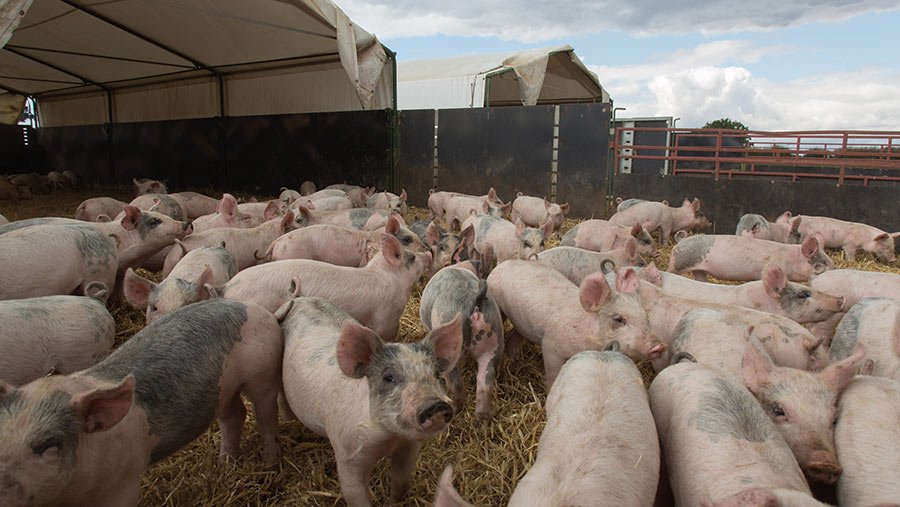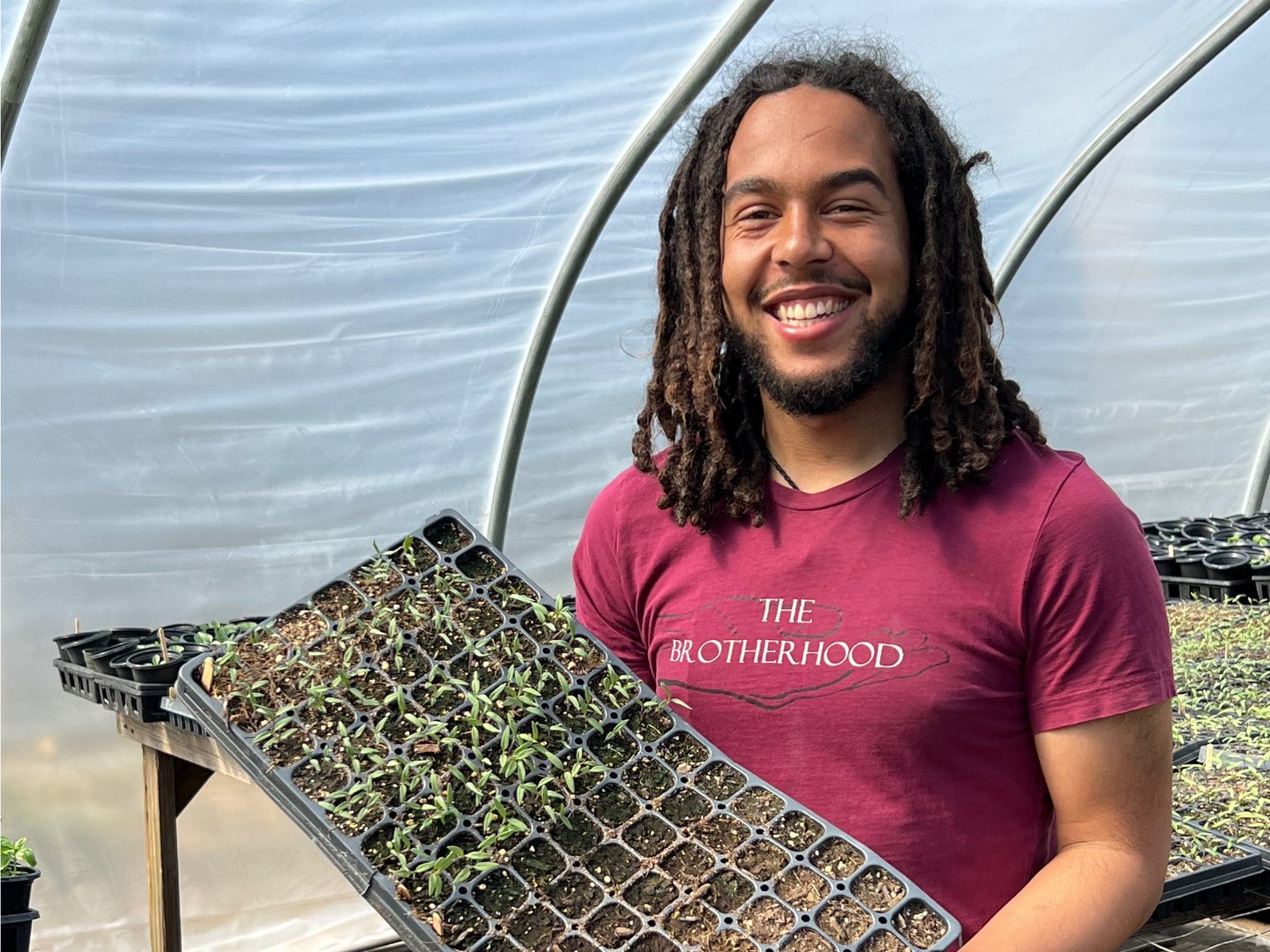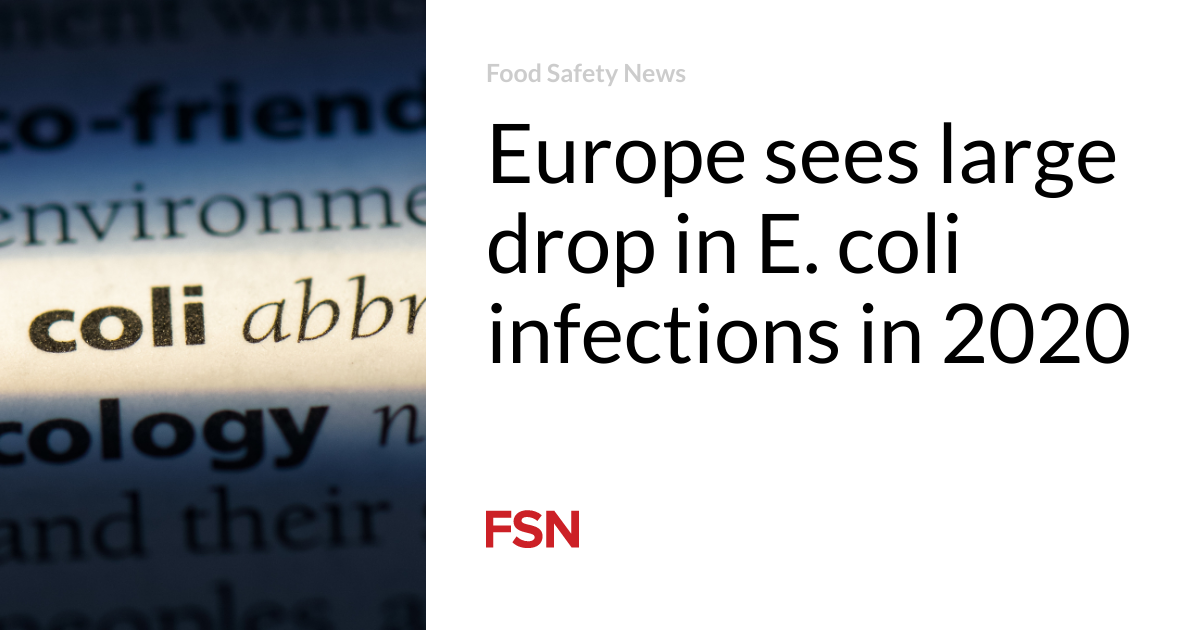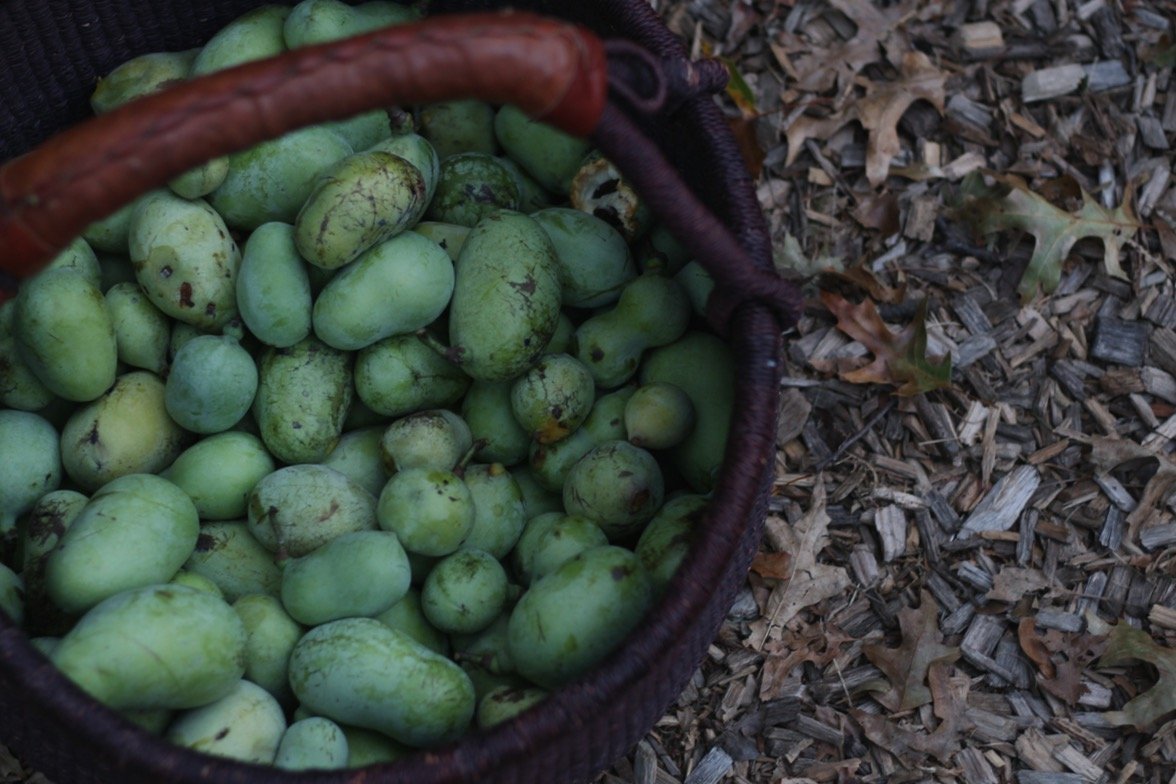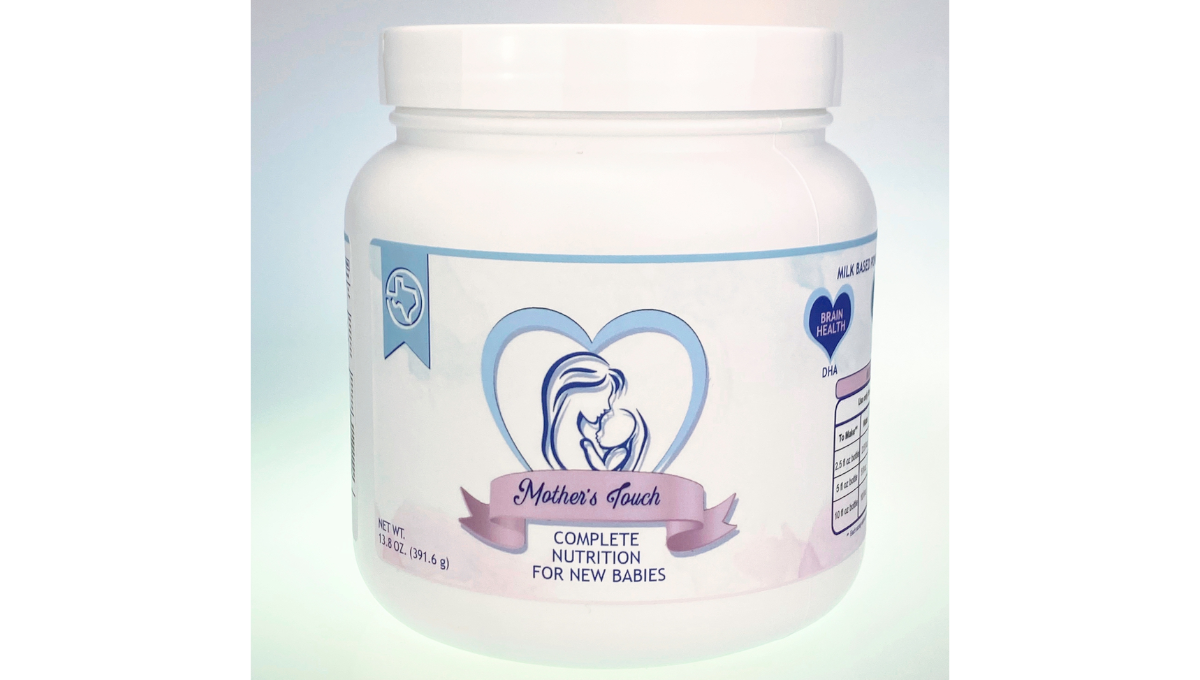- Medicines, chemical formulations that alleviate much human suffering, can also be significant pollutants, with active ingredients often excreted from the human body and entering waterways. However, the intensity of this contamination and of its impacts has not been well researched.
- A study published in June analyzed samples from 1,000 sites along waterways in more than 100 nations, looking for 61 active pharmaceutical ingredients (APIs). Their results suggest that concentrations of at least one API breached safe levels for aquatic life at nearly 40% of sites tested globally.
- Some pharmaceuticals are endocrine disruptors (EDCs), which mimic hormones and interfere harmfully with the endocrine system in various organisms, while other drugs are linked to antimicrobial resistance (AMR), considered one of the biggest threats to human health and well-being today.
- Despite growing awareness among scientists, there is no systematic reporting of waterway pollution by medicines, or impacts on ecological health. Currently, many human-excreted pharmaceuticals enter directly into waterways, or pass through existing wastewater treatment facilities. Fixing the problem will be very expensive.
In 2020, as the COVID-19 pandemic consumed humanity’s attention, our species ran through 4.5 trillion doses of myriad pharmaceuticals. In India alone, one drug, paracetamol — a pain reliever used to treat some COVID-19 symptoms — saw sales top 3.5 billion pills through 2021. This occurred even as the pandemic pushed big pharma into overdrive, with companies racing to develop and hit the market with successful vaccines, dispensing more than 12.6 billion doses in record time.
But long before COVID-19 struck, new and existing medicinal drugs were being churned out at a cracking pace, a trend sure to surge in the future. Over the next five years, drugmakers could unveil 300 new drugs, health research firm IQVIA predicted.
Yet, medicines, even life-saving ones, in the wrong place and in the wrong doses can be pollutants.
These chemical concoctions that enter the human bloodstream and alleviate much human suffering also often end up seeping into the Earth’s veins — into rivers, lakes and estuaries — with scientists remaining largely in the dark regarding the ills potentially bred in this wider wild world.
Taking stock of pharmaceutical pollution
A global study published this year found that rivers everywhere, including in Antarctica, are tainted by pharmaceuticals. Alistair Boxall and his colleagues analyzed samples from 1,000 sites in more than 100 countries, looking for 61 active pharmaceutical ingredients (APIs), the core components that turn mundane compounds into medicines.
There are more than 4,000 APIs in use today. All are compounds designed to evoke a biological response, to manipulate the functioning of living organisms. That fact alone means that APIs released into waterways have the potential to do environmental harm.
Initial findings by Boxall’s team indicated that concentrations of at least one API breached safe levels for aquatic life at a quarter of sites studied. A follow-up study published in June suggests this number could be higher, closer to 40%, if a wider range of impacts is considered.
These statistics point to a stunning scientific oversight, says Boxall, a professor of environmental science at the U.K.’s University of York. He says he’s irked that now, decades after many medicinal drugs first came into wide use, they continue to be labeled “emerging pollutants.”
“Only in the last 10 to 20 years have we started to recognize that pharmaceuticals can harm the environment,” he said.
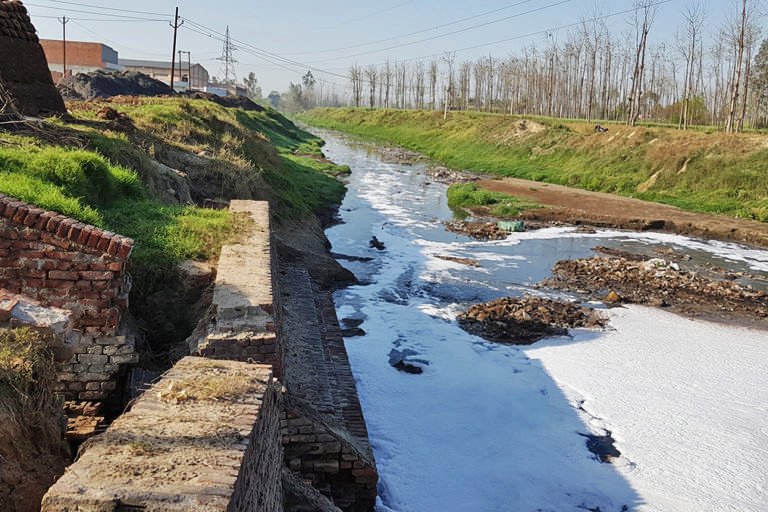
The metformin example
Of the 61 APIs evaluated, some kept popping up repeatedly. Among the most ubiquitous in the world’s waterways were carbamazepine, employed to treat epilepsy; as well as the everyday stimulant caffeine; and metformin, a first-line medication for type 2 diabetes prescribed by doctors and used by patients the world over.
Mongabay decided to look at just one of those three, picking metformin, not because it stands out as a particularly dangerous pollutant, but because its environmental pathways and our poor understanding of its ecological impacts exemplify other highly prescribed pharmaceuticals.
Roughly 90% of people diagnosed with diabetes suffer from type 2 diabetes, where the body progressively loses its ability to use insulin, a hormone produced by the pancreas. Insulin normally helps cells absorb sugar in the form of glucose from the blood. But insulin resistance results in high blood glucose levels. Over time, too much sugar in the blood can damage vital organs like the kidneys, weaken nerves, and in extreme cases, lead to blindness or loss of limbs.
Metformin hydrochloride — or 1,1-Dimethylbiguanide hydrochloride — is the most prescribed diabetes drug today. The exact mechanism by which it lowers glucose levels is unknown. The latest research suggests it works by triggering enzymes in the liver that limit glucose formation, and increasing glucose absorption in the intestine. Like many drugs, it has a litany of side effects that vary from patient to patient.
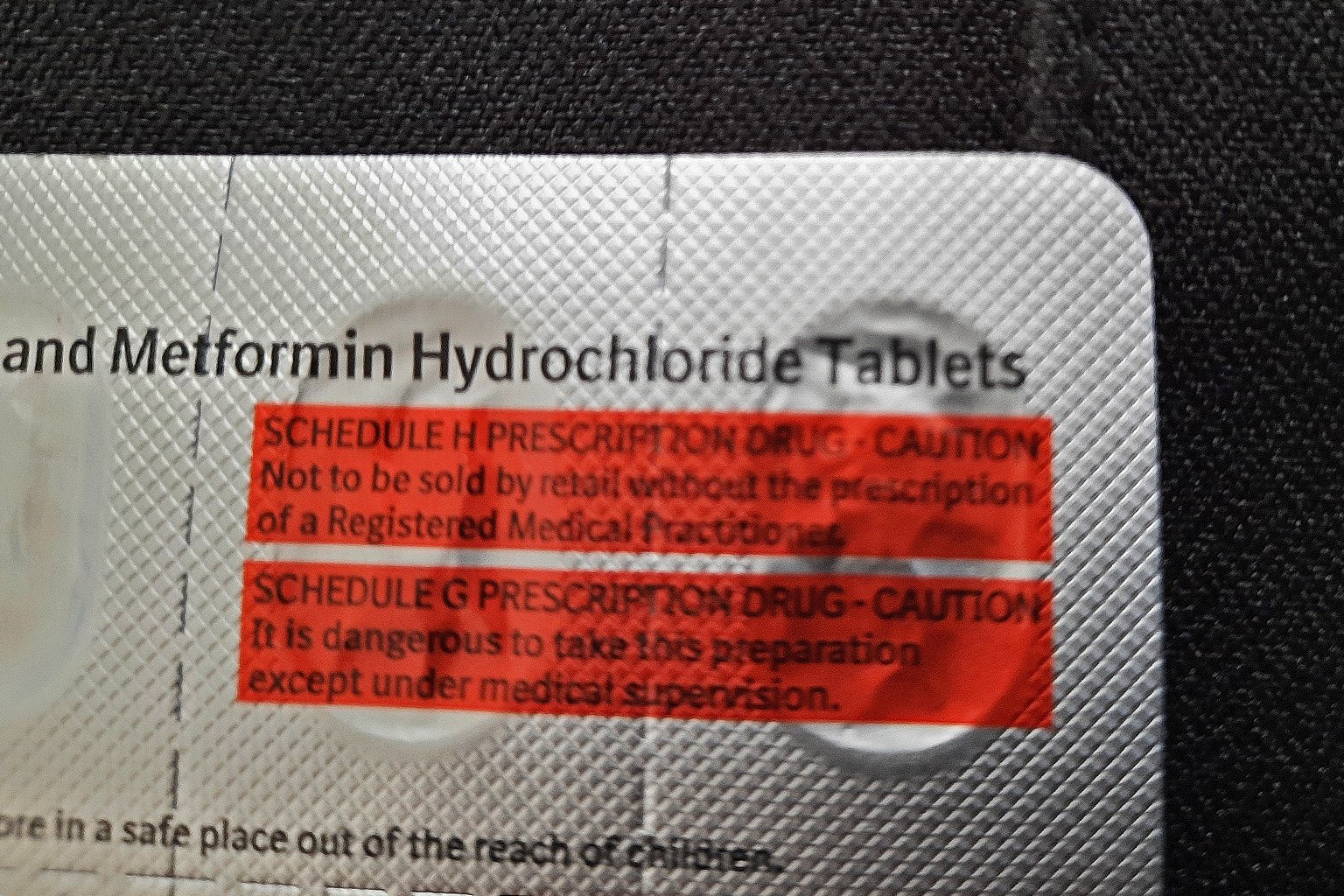
Metformin was synthesized in a lab in Dublin in 1922, but it was only in 1957 when French physician Jean Sterne first reported its glucose-lowering properties. The 1940s to ’60s saw a surge in its medicinal use globally, corresponding with an explosion in new drugs coming on the market, including the mass distribution of antibiotics.
While other nations approved metformin for diabetes treatment, the U.S. didn’t do so until the mid-1990s. Regulatory authorities moved with caution there following a debacle with another diabetes drug: phenformin. Phenformin was linked to severe lactic acidosis, or acid build-up in the bloodstream, leading to thousands of deaths in the U.S. in the 1960s and ’70s.
Concerns about human safety have understandably remained central to drug development. But ecological concerns didn’t feature significantly in the approval of metformin globally, and environmental harm is rarely a block today to new drug approvals in most nations.
That reality now leaves scientists asking the question: How much of any one pharmaceutical, or a combination of these pollutants, might result in an overdose for a river system?
The answer is, we just don’t know and data remain woefully lacking.
Despite its global scope, the original investigation by Boxall’s team captured the API footprint for just 471 million people, without evaluating any specific harms. The planet is home to nearly 8 billion humans, with new drugs streaming into the market — and waterways — every year.
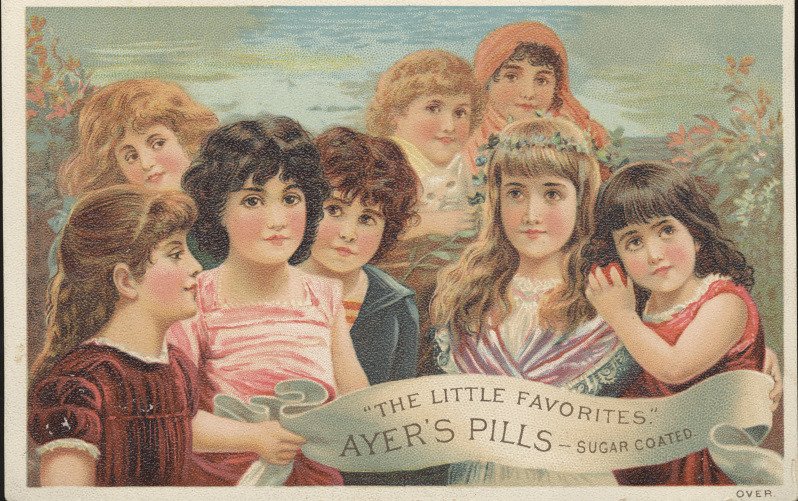
On the trail of pharmaceuticals in India
Soaring human population since World War II has translated into higher demand for medications worldwide, especially in countries where incomes rose more recently. That’s led to increased pharmaceutical pollution, including in newly urbanized, once pristine areas. Other common denominators of growing contamination include easy access to, and broad acceptance of, medicines across the planet.
India, for example, is now the world’s third-biggest pharmaceutical manufacturer by volume, earning it the moniker “the world’s pharmacy.” In particular, it serves as a hub for generic drug production (versions of which replace more expensive formulations that are no longer patent-protected). The resulting cheaper medicines are readily available on India’s domestic market, while also being shipped worldwide. Around 40% of generic formulations sold in the U.S. are supplied by India, according to one estimate.
While most people link medical waste to hospitals, medical facilities are not, in fact, the most significant source of pharmaceutical pollution. Though drug manufacturing plants do generate waste containing APIs, it’s households that are by far the biggest source of pharma contaminants.
Which brings us back to metformin. India is home to the second-largest number of people with diabetes after China: 80 million in total — greater than the entire population of France. In the Indian capital, Delhi, a city of nearly 20 million, an estimated 25-33% of residents have diabetes, and many are certainly metformin users.
Those taking the ubiquitous diabetes drug unwittingly pollute their vital water source, the Yamuna River, a tributary of the Ganges, which irrigates much of north India’s crops.
“Any change in the use of medicines by a society will influence what we see in a river,” Boxall explained. That’s because many pharmaceutical compounds, including metformin, pass through the human body without losing their potency, and aren’t metabolized fully. In fact, more than two-thirds of a metformin dose can end up in the urine or feces intact.
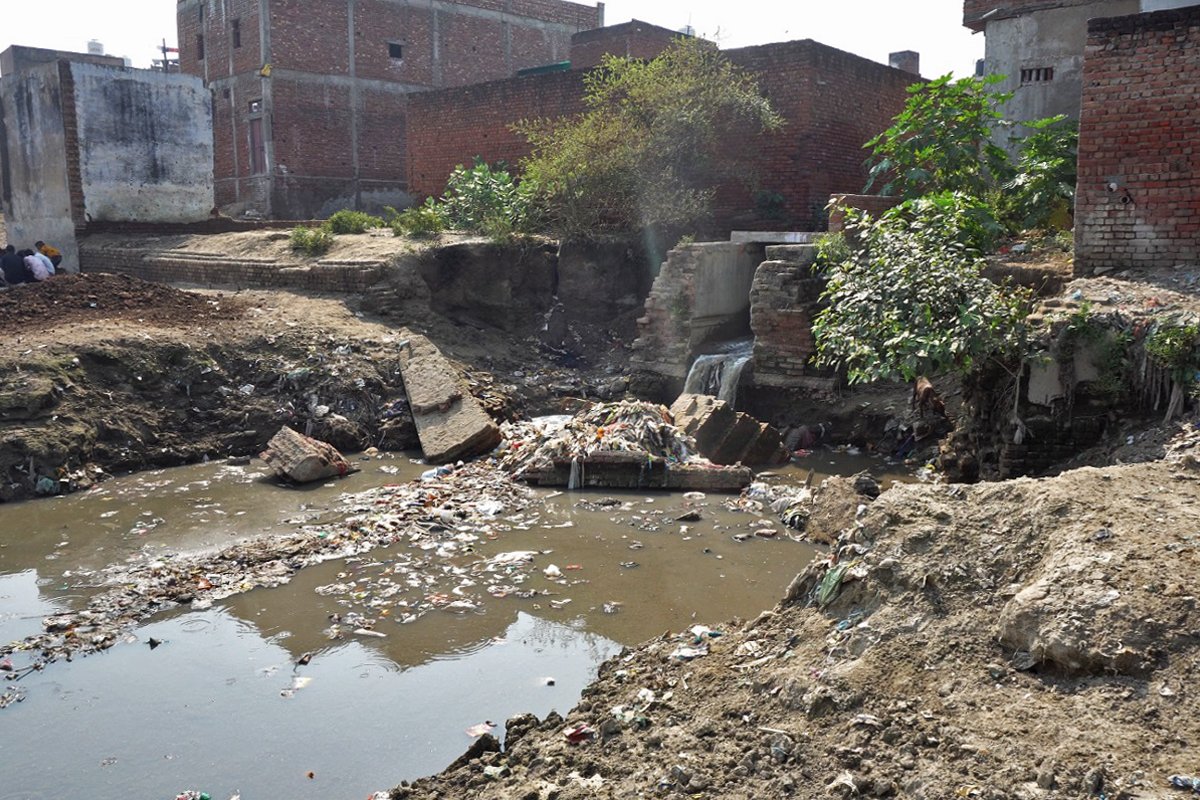
And most of it passes right through sewage treatment plants.
According to India’s primary pollution control agency, sewage is the main contaminant of India’s waterways. The country struggles to ensure even primary treatment of household wastewater. Bigger cities and towns generate about 30 billion liters (7.9 billion gallons) of sewage daily. Only about a fifth of it gets treated.
Delhi is an outlier in this respect, with the ability to treat 80% of its waste. Yet, according to government data, 24 of the 34 capital sewage treatment plants did not meet standards for wastewater treatment as of 2021. The Yamuna receives most of the mega city’s wastewater.
Despite being among India’s best-equipped facilities for tackling waste, the capital’s sewage treatment plants aren’t designed for extracting pharmaceutical contaminants. Researchers detected a cocktail of 22 APIs, including metformin, in river water samples collected in the capital region. In the new study, Delhi had some of the world’s highest average concentrations of APIs, alongside Addis Ababa, Ethiopia; La Paz, Bolivia; and Lahore, Pakistan.
Studies like those published by Boxall’s team are closing an important gap. The swaths of the planet that have, until now, received the least attention in mapping pharmaceutical pollution —South America, sub-Saharan Africa and parts of southern Asia — turn out to be some of the most affected.
Lagos in Nigeria, the most populous city in sub-Saharan Africa, is another pollution hotspot, with 26 pharmaceutical compounds detected in the Odo-Iya Alaro River. “There are no restrictions on who can open a pharmacy,” explained Charles Obinwanne Okoye, an environmental biologist at the University of Nigeria, “and people can easily buy medicines without a prescription.”
“It is first and foremost a problem of waste management,” Okoye asserted, with sewage treatment systems woefully inadequate in countries where pharmaceutical use is galloping ahead.
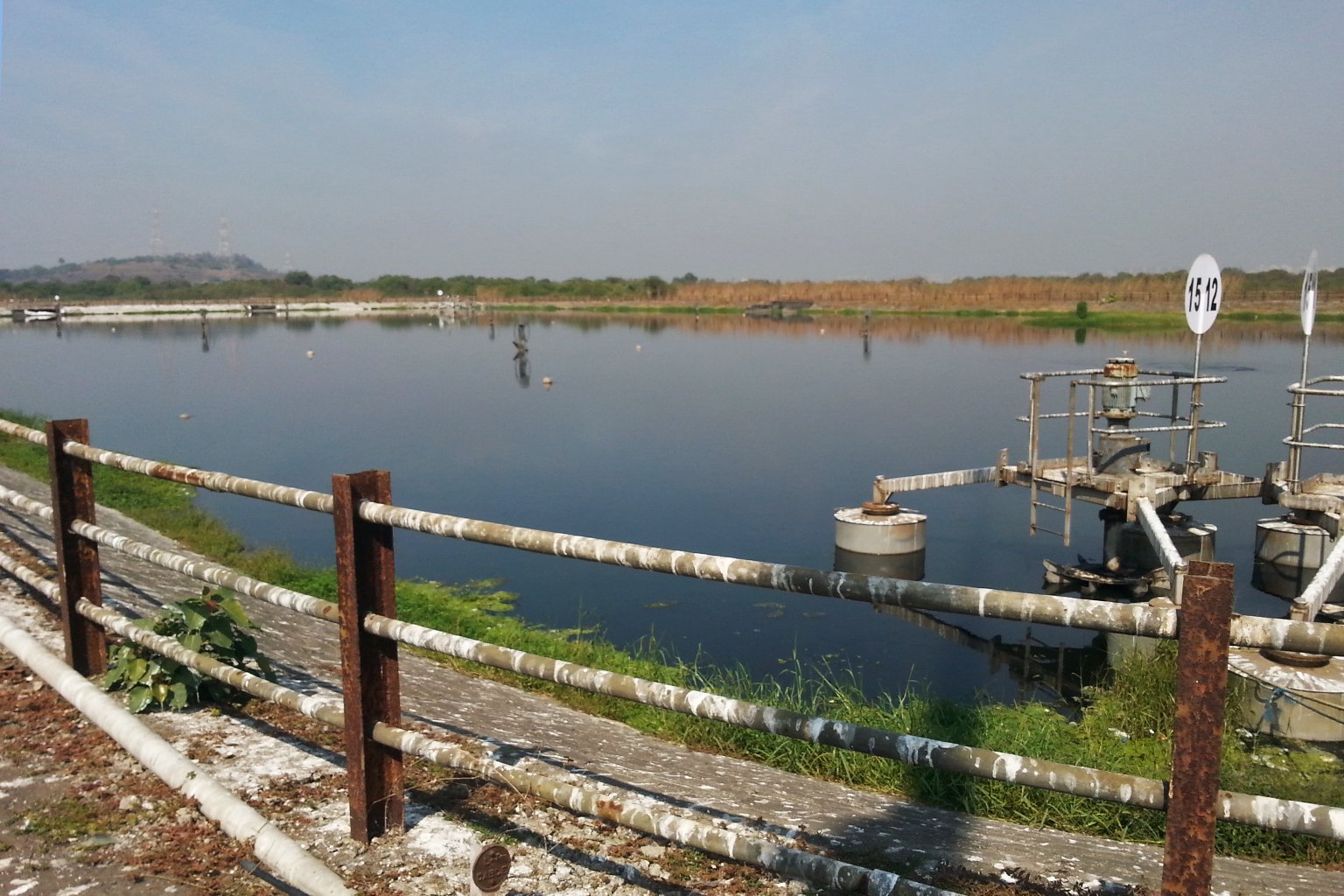
Early evidence for pharmaceutical environmental impacts
The same properties that make medications so useful in the targeted organism — humans or livestock — can turn them into dangerous ecological pollutants, especially in waterways where other water users are exposed to them.
Downstream from the Yamuna River in Delhi, people from informal settlements use the water for their everyday needs, including, in some cases, for drinking. They also use the river water to irrigate crops, with pharmaceuticals potentially contaminating the food supply.
Direct exposure can be dangerous for wildlife too. In clinical studies, brown trout (Salmo trutta) display addiction-like behavior to methamphetamine, commonly known as meth. But fish addiction to illicit drugs is not the only problem.
Certain pharmaceuticals are a subset of a broader class of chemicals called endocrine disruptors (EDCs), which mimic hormones and interfere with the endocrine system. These chemicals are found in everything from plastic bottles to pesticides, and are used in pharmaceuticals too.
Metformin may also fall into this category. Although the diabetes drug does not structurally resemble classical EDCs, there’s an increasing recognition “that endocrine disruption may occur by mechanisms other than classical endocrine receptor binding.” According to some studies, metformin is capable of producing “wide and unknown changes” in fish, mammals and invertebrates.
Scientists found that when the fathead minnow (Pimephales promelas) was exposed to metformin levels equivalent to those occurring in wastewater, male fish showed signs of feminization, some males were abnormally small, and the drug also impacted fish reproduction. However, other studies did not capture similar effects in the species.
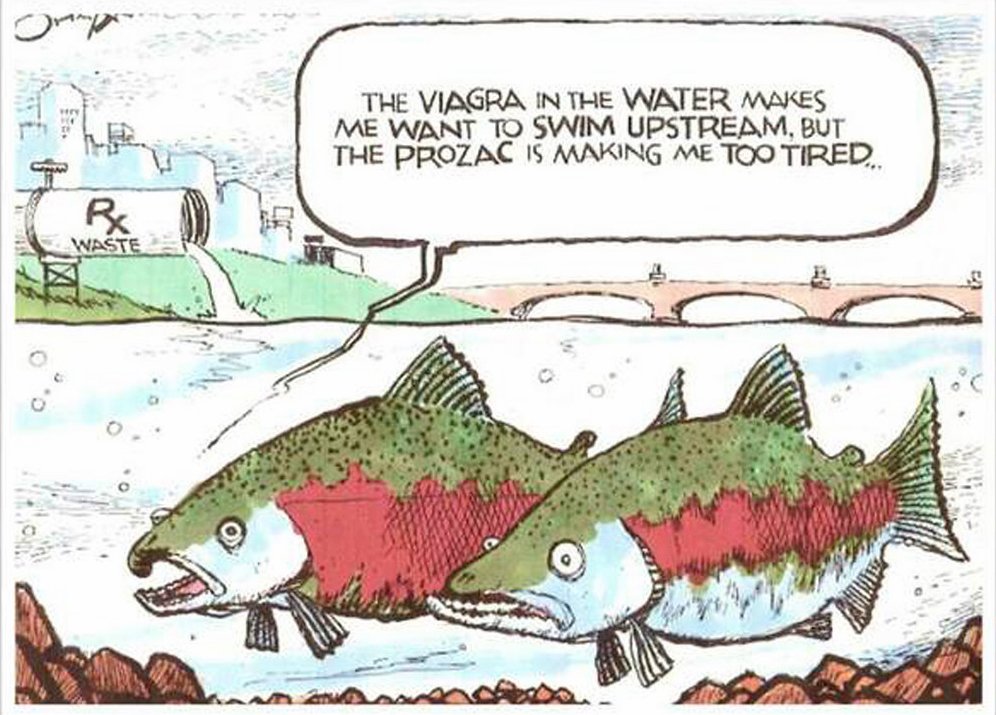
Questions regarding low-dose effects
Some experts maintain that when it comes to EDCs, larger doses don’t equal larger effects. There is no simple one-to-one correlation, they say, between dose size and impacts. Hence, the conventional rationale for determining safe limits for environmental pollutants may not apply to EDCs. In some instances, lower doses can produce vastly different effects than concentrations studied in lab experiments.
This low-dose effect also manifests in another class of pharmaceuticals linked to antimicrobial resistance (AMR). Disease-causing pathogens including bacteria, viruses and fungi can evolve in the human body, and in the wild, to resist antibiotic drugs designed to target them. This chiefly happens via their exposure to medical compounds developed to kill them, with a subset of the surviving pathogen population more likely to be immune to the antibiotic, an evolved trait passed to offspring.
Sulfamethoxazole is an antibiotic and growth promoter for livestock. It’s also a common pollutant. Today, its efficacy is being vastly undermined, with bacterial targets becoming increasingly resistant.
Importantly, toxic levels of antibiotics are not required to produce significant antimicrobial resistance. Even lower doses — like those potentially found in waterways — can give rise to resistance by allowing the microbes a chance to familiarize with and adapt to a threat.
This “silent pandemic” of super bugs is stealthily hollowing out the medical armory of antibiotics built up over decades. A study commissioned by the U.K. government estimated the death toll from AMR infections could reach 10 million annually by 2050. AMR is already exacting a devastating toll in India, where health care access is poor. More than 50,000 newborns die every year there from drug-resistant infections.

Flying blind into our pharmacological future
Despite their potential for harm, APIs have thus far remained understudied and underregulated.
“Pharmaceutical pollutants are one example of chemicals of concern that fall outside the scope of existing international treaties that apply to chemicals and waste,” said Mirella Miettinen, a specialist in environmental law at the University of Eastern Finland. Miettinen is a lead investigator for the SUDDEN project, aimed at curbing ecological risks arising across the life cycle of pharmaceuticals.
Despite the growing awareness of scientists, there is no systematic reporting about the impacts of drugs on ecological health. This is especially true in countries where there is steady growth in pharmaceutical use, combined with poor waste management. But it is not a lapse limited to “pharmerging” economies, as countries like China, India and Brazil are known in the industry lingo.
Boxall says that of the roughly 2,000 pharmaceuticals in use in Europe, ecological effects data are available for less than a fifth. Sweden is a pioneer on this front. The Scandinavian nation set up an environmental classification system for pharmaceutical products in 2005.
The risk-benefit analysis done by EU regulatory bodies during the authorization of a new medicinal product does not consider environmental risk, Miettinen noted. The U.S. FDA, on the other hand, is empowered to refuse applicants who don’t furnish sufficient information about the environmental effects of a new medicine. However, a plethora of approval exceptions means environmental assessments aren’t the norm for new drug applications.
Experts like Miettinen argue that regulators should always consider environmental impacts when authorizing new pharmaceuticals and restrict the use of a medicine that carries with it the greatest environmental risk.

Likewise, excessive prescribing and improper pharmaceutical use needs to be checked. Far more research is also needed into the impacts of individual drugs, and multiple drug interactions, on waterways around the globe.
But even knowing what those impacts are won’t be enough. Take metformin, for example. It’s an essential front-line drug; consumers and health care providers can’t easily substitute a “greener” version for it. To do so, a company would need to find it financially beneficial to produce one that is just as efficacious, safely test it, and make it available — an expensive, lengthy process.
“We need various actions at different levels to tackle the problem,” Miettinen said, including “creating incentives for the development of compounds with improved biodegradability.”
Once medicines enter the market and our bodies, keeping track grows far more complicated.
Regulating pollution at manufacturing sites is low-hanging fruit, and frameworks for controlling industrial waste often include pharmaceutical manufacturers. “The pharmaceutical industry is a heavily polluting industry which is under the Red category,” said Gopal Krishna, an environmental activist based in India. “These are industries which generate hazardous waste.”
Hospitals are well-placed to undertake treatment of APIs before they enter the public wastewater stream. Several API removal technologies are currently being tested at hospitals, many in Europe.
But household waste is far trickier to tackle. For more industrialized countries, this means wholesale upgrades to wastewater infrastructure. For less industrialized nations, the process would need to start with waste treatment facility construction — with builders leapfrogging to install cutting-edge water treatment technologies, some now considered too expensive even for richer nations.
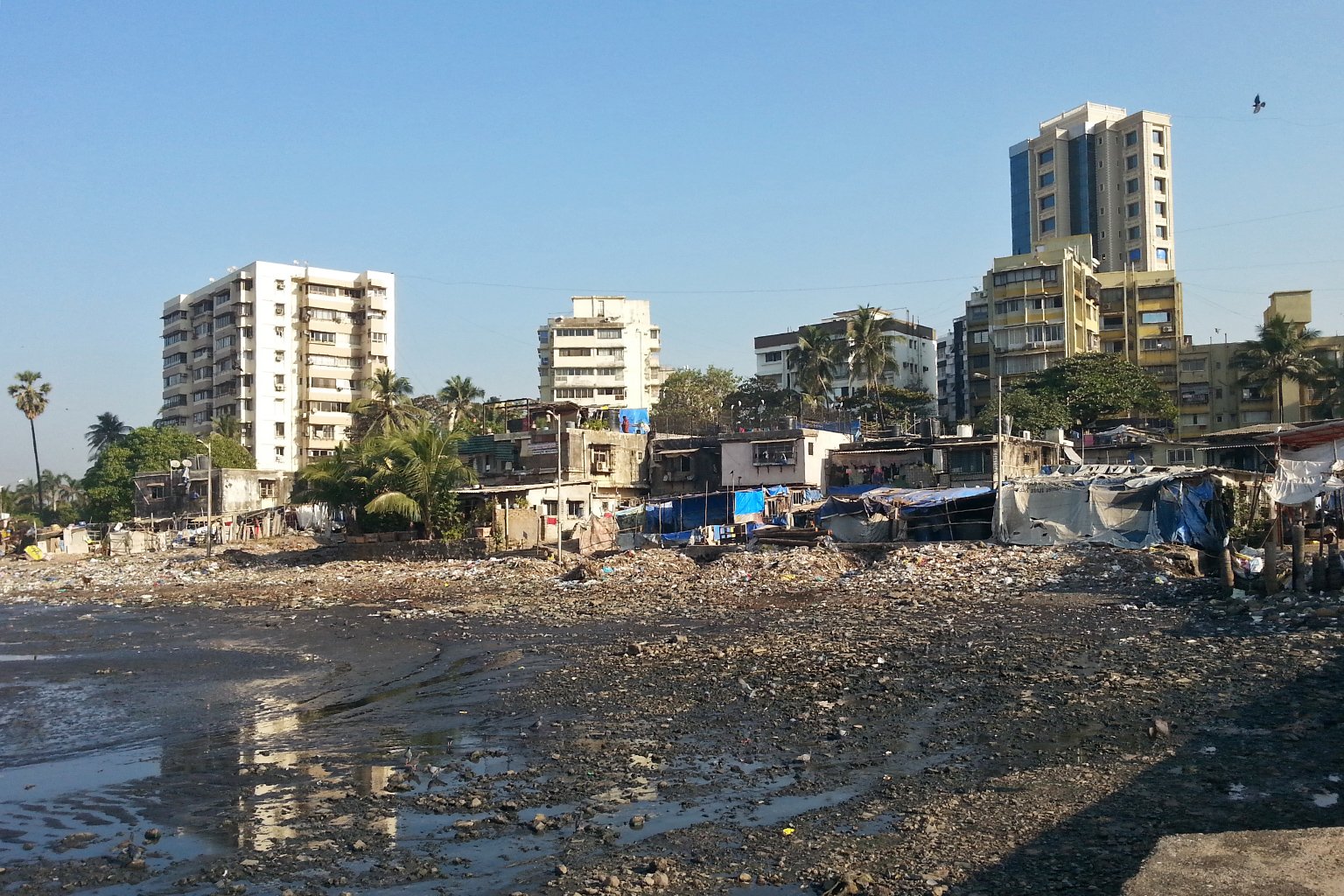
Metformin again provides a good example of inherent problems. It is already ubiquitous in the water supply, even in industrialized countries like the U.K. and U.S., because conventional treatment methods can’t remove it.
Radboud University Medical Center in the Netherlands partnered with Dutch company VitalFluid to test methods to extract pharmaceutical residues from hospital wastewater. They relied on an advanced oxidation process that increased reactive oxygen and nitrogen. Even then, metformin proved to be a stubborn pollutant to extract.
“Solutions like activated carbon filters or ozone treatments will degrade a lot more pharmaceuticals,” Boxall explained. “The problem is that they are costly.”
Installing such systems at scale will greatly burden taxpayers. More than a decade ago, an upgrade at a single Canadian treatment plant to deal with organic waste and pharmaceuticals cost more than $300 million. This July, the Delhi government approved an 18.55 billion rupee ($230 million) plan to clean up the Yamuna River. Authorities envision using this money to lay down new sewer lines, build 10 new sewage treatment units, and upgrade six existing sewage treatment plants.
Clearly, achieving the goal of fully evaluating and effectively managing the world’s pharmaceutical pollution lies far in the future.
Mongabay reached out to pharma majors who market metformin globally, including Pfizer, Johnson & Johnson, Merck & Co. and Bristol Myers Squib, but did not receive any responses by the time of publication.
Banner image: A veriety of drugs in vials and an IV bottle. Image by National Cancer Institute via Unsplash (Public domain).
Citations:
Orive, G., Lertxundi, U., Brodin, T., & Manning, P. (2022). Greening the pharmacy. Science, 377(6603), 259-260. doi:10.1126/science.abp9554
Wilkinson, J. L., Boxall, A. B., Kolpin, D. W., Leung, K. M., Lai, R. W., Galbán-Malagón, C., … Teta, C. (2022). Pharmaceutical pollution of the world’s rivers. Proceedings of the National Academy of Sciences, 119(8), e2113947119. doi:10.1073/pnas.2113947119
Bouzas‐Monroy, A., Wilkinson, J. L., Melling, M., & Boxall, A. B. (2022). Assessment of the potential ecotoxicological effects of pharmaceuticals in the world’s rivers. Environmental Toxicology and Chemistry, 41(8), 2008-2020. doi:10.1002/etc.5355
Bailey, C. J. (2017). Metformin: Historical overview. Diabetologia, 60(9), 1566-1576. doi:10.1007/s00125-017-4318-z
Ambrosio-Albuquerque, E. P., Cusioli, L. F., Bergamasco, R., Gigliolli, A. A. S., Lupepsa, L., Paupitz, B. R., … de Brito Portela-Castro, A. L. (2021). Metformin environmental exposure: A systematic review. Environmental Toxicology and Pharmacology, 83, 103588. doi:10.1016/j.etap.2021.103588
Horký, P., Grabic, R., Grabicová, K., Brooks, B. W., Douda, K., Slavík, O., … Randák, T. (2021). Methamphetamine pollution elicits addiction in wild fish. Journal of Experimental Biology, 224(13), jeb242145. doi:10.1242/jeb.242145
Niemuth, N. J., & Klaper, R. D. (2018). Low-dose metformin exposure causes changes in expression of endocrine disruption-associated genes. Aquatic Toxicology, 195, 33-40. doi:10.1016/j.aquatox.2017.12.003
Niemuth, N. J., & Klaper, R. D. (2015). Emerging wastewater contaminant metformin causes intersex and reduced fecundity in fish. Chemosphere, 135, 38-45. doi:10.1016/j.chemosphere.2015.03.060
Blackwell, B. R., Ankley, G. T., Biales, A. D., Cavallin, J. E., Cole, A. R., Collette, T. W., … Villeneuve, D. L. (2022). Effects of metformin and its metabolite guanylurea on fathead minnow (Pimephales promelas) reproduction. Environmental Toxicology and Chemistry. doi:10.1002/etc.5450
Murray, C. J., Ikuta, K. S., Sharara, F., Swetschinski, L., Aguilar, G. R., Gray, A., … Naghavi, M. (2022). Global burden of bacterial antimicrobial resistance in 2019: A systematic analysis. The Lancet, 399(10325), 629-655. doi:10.1016/S0140-6736(21)02724-0
FEEDBACK: Use this form to send a message to the author of this post. If you want to post a public comment, you can do that at the bottom of the page.








